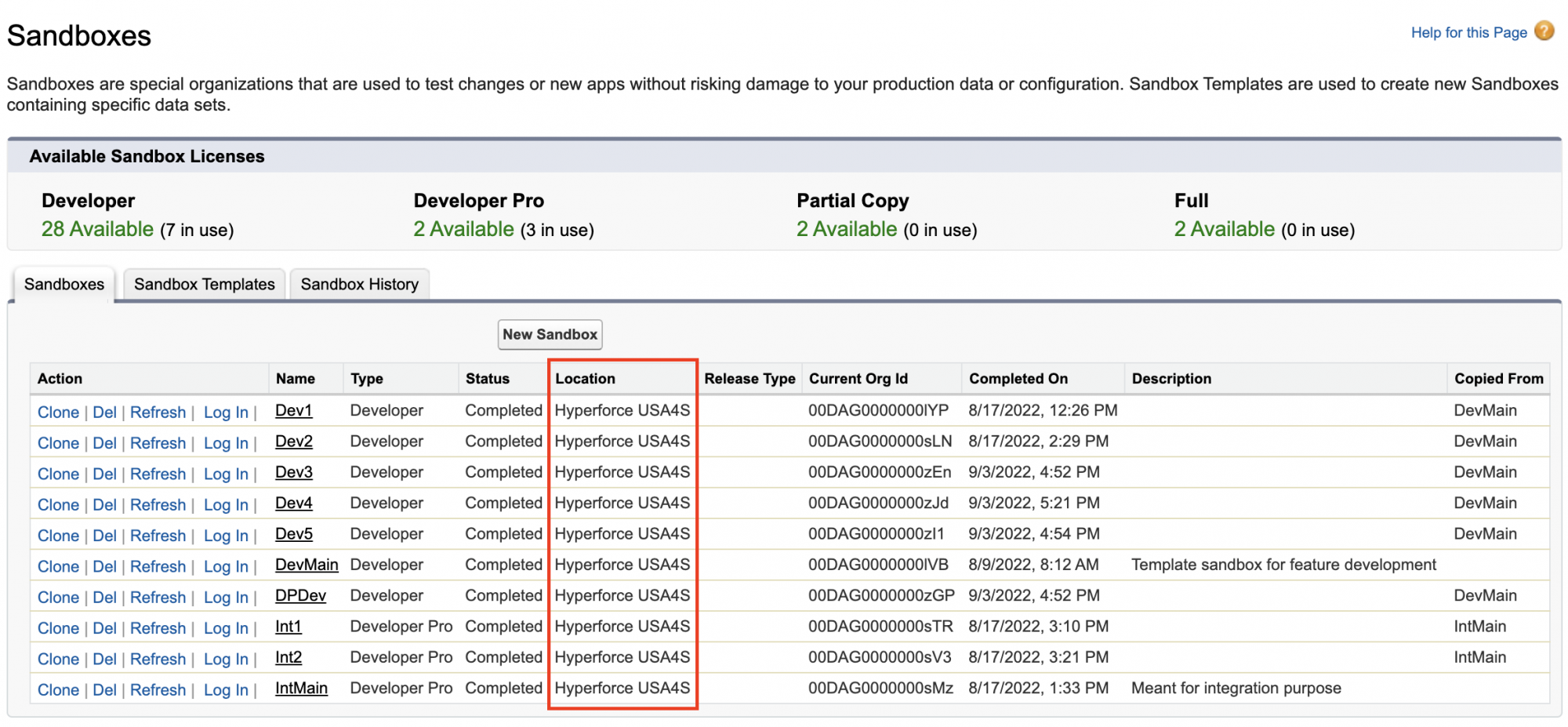A sandbox is a critical tool for building applications on the Salesforce Platform. It is an easy-to-create replica of the production org that offers IT teams an isolated environment to safely test changes without impacting business operations. As businesses move faster than ever, there is a greater expectation of IT teams to speed up the delivery of new solutions without compromising on quality. Admins and developers require world-class tooling that can provide them the agility and flexibility to keep up with this fast-paced world of application development.
That’s why we’re excited to introduce Quick Clone for sandboxes on Hyperforce! Now all sandboxes running on Hyperforce will be equipped with a new feature called Quick Clone, which radically improves the speed of cloning sandboxes, making teams more productive, accelerating testing, and getting releases out faster.
Hang on a sec, what is Hyperforce?
In a nutshell, Hyperforce is Salesforce running on public cloud infrastructure. The new infrastructure architecture, announced in December 2020, allows Salesforce to leverage the elasticity of the public cloud to improve the speed at which sandboxes are copied. In Winter ’23, Salesforce launched the first speed enhancement, called Quick Clone, for Developer and Developer Pro sandboxes. We’re excited to announce that Quick Clone is now generally available for Partial Copy and Full sandboxes.
What exactly is Quick Clone?
Admins and developers can request Sandboxes in two ways: either using the production org or an existing sandbox as the source of the copy. When they create one of the four types of sandboxes — Developer, Developer Pro, Partial Copy, or Full — they get a copy of the production org’s metadata or metadata and data. This is useful when building or testing customizations using the latest state of the production org.

But often, development teams sharing a sandbox without version control may find themselves stepping on each other’s toes, unintentionally resulting in conflicting changes. Teams have to spend enormous amounts of time and effort to carefully track each developer’s changes or they risk introducing bugs in production. Similarly, sandboxes that are reused in continuous integration systems often get modified by tests, thereby making it harder for developers to reproduce bugs. The clone feature, which replicates a sandbox in its entirety, allows teams to solve the aforementioned challenges by setting up a “template sandbox” with the desired metadata and sample data, and stamping out clones of it for parallel development and better reproduction of bugs. However, depending on the number of clones required, the time taken to build these sandboxes can quickly add up.
This is where Quick Clone comes to the rescue. Quick Clone turbocharges the cloning process so that each new copy of the “template sandbox” can be created rapidly in order to improve developer productivity while reducing sandbox setup times.
How to enable Quick Clone
All sandboxes created on Hyperforce are automatically enabled for Quick Clone. The screenshot below shows the Sandbox page within Setup with a list of all the sandboxes belonging to the production org. The Location column indicates the instances on which the various sandboxes exist and whether the instances are located in Hyperforce. Clicking the Clone button next to a Hyperforce-based sandbox automatically uses the Quick Clone feature to build the replica sandbox rapidly.

To create sandboxes in Hyperforce and access Quick Clone, customers must meet Hyperforce eligibility requirements and must have their production orgs in Hyperforce. Customers with existing production orgs in Salesforce’s first-party data centers must contact their Account team in order to request a migration to Hyperforce. Once a production org is migrated to Hyperforce, all subsequent sandbox creations and refreshes are automatically processed in Hyperforce.
In addition to the UI, customers can leverage Quick Clone by simply cloning their Hyperforce-based sandboxes using the CLI.
What’s next for sandboxes on Hyperforce?
With Quick Cloning behind us, our focus now turns toward Quick Create, a feature that dramatically speeds up Full sandboxes created and refreshed on Hyperforce, and Scale sandboxes, a new type of environment that helps you validate if your customizations are ready to handle business growth or large scale events. In other words, we’re just getting started!
Helpful references
- Sandbox Solutions Brief: Avoid risk and maintain governance with Salesforce sandboxes
- Sandbox Demo Video: Innovate faster with Salesforce sandboxes — get started today!
About the authors

Tara Krishnan is a Product Marketing Manager for the Salesforce Platform. She focuses on Developer Services, DevOps, and Sandboxes.

Rohit Mehta is Sr. Director of Product Management for Developer Services. He focuses on Development Environments and related ISV tooling for the Salesforce Platform.